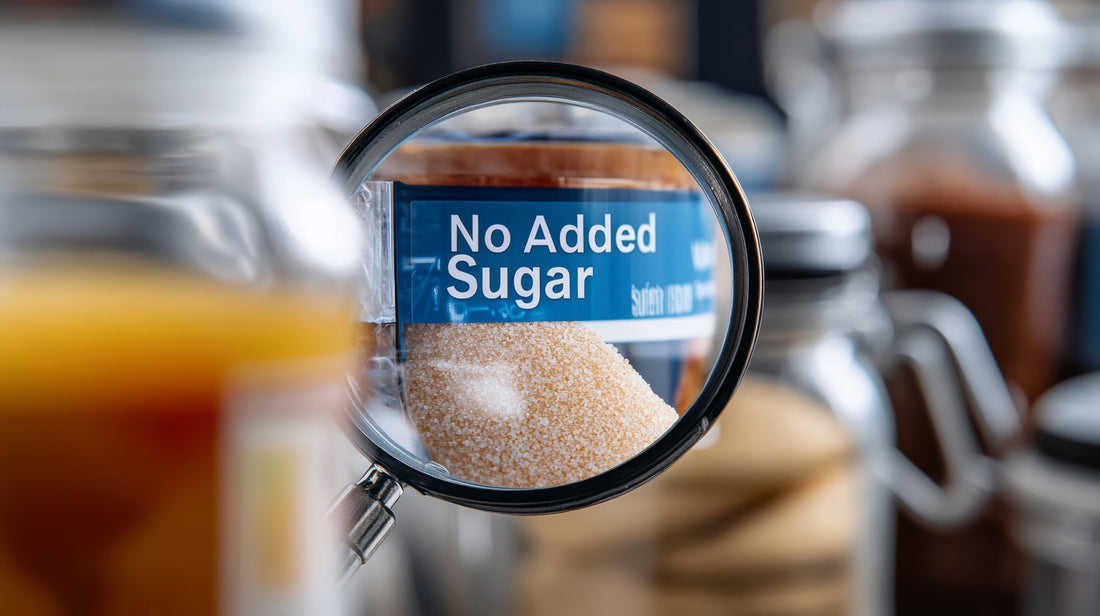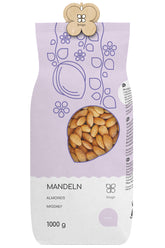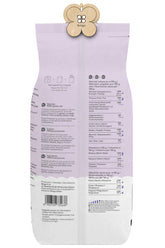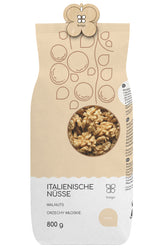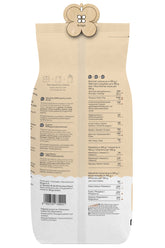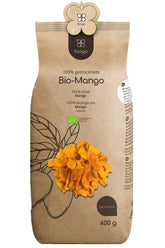Come si leggono le etichette degli alimenti?
Contenuto:
- Nome del prodotto sull'etichetta
- Come si decifra la composizione di un prodotto?
- Simboli "E" sulle etichette – sono tutti cattivi?
- Etichettatura e informazioni sugli allergeni
- Leggendo correttamente l'etichetta, le persone con un'intolleranza alimentare possono scegliere il prodotto giusto.
- Informazioni nutrizionali sull'etichetta
- Data sulla confezione – come leggerla correttamente?
- Possono esserci ulteriori informazioni sull'etichetta?
I consumatori gestiscono in modo diverso le informazioni sulle etichette degli alimenti. Gli allergici prestano attenzione agli allergeni, le persone a dieta ipocalorica alla composizione e al valore energetico. Chi presta attenzione alla qualità e alla sicurezza degli alimenti guarda la data di scadenza. Dal punto di vista di un consulente nutrizionale, è importante saper comprendere e analizzare il valore nutrizionale di un prodotto. Impariamo quindi i segreti delle etichette e scopriamo come leggerle correttamente per prendere una decisione informata.
Nome del prodotto sull'etichetta
Spesso riconosciamo i prodotti dalla loro confezione, ma vale la pena assicurarsi che non assomigli a quella di un prodotto concorrente, poiché ciò potrebbe causare confusione. A volte il nome di un prodotto fornisce indicazioni sul tipo di lavorazione, come ad esempio "congelato" o "affumicato". È importante che il nome del prodotto non venga sostituito da un marchio o un nome creato esclusivamente a scopo di marketing. Prestate sempre attenzione alla denominazione, che si tratti di formaggio, un prodotto simile al formaggio, burro o una miscela di grassi. Sebbene la differenza sia minima, si tratta di prodotti completamente diversi.
Come si decifra la composizione di un prodotto?
Gli ingredienti del prodotto includono tutte le sostanze, compresi gli additivi, utilizzate nel processo di produzione e che rimangono nel prodotto finale. Sull'etichetta gli ingredienti sono elencati in ordine decrescente: più in basso si trovano nella lista, minore è la quantità dell'ingrediente nel prodotto.
Eccezioni a ciò sono ad esempio la frutta e la verdura fresca (compresa la patata), l'acqua frizzante e l'aceto (purché non contengano altri additivi), nonché prodotti come formaggio, burro, latte fermentato e panna, purché non contengano ingredienti aggiuntivi come enzimi o colture batteriche.
Evitate prodotti con lunghe liste di ingredienti con nomi sconosciuti e quelli che contengono sciroppo di glucosio-fruttosio, zucchero, grasso di palma, grasso di cocco o grassi trans.
Simboli "E" sulle etichette – sono tutti cattivi?
Gli additivi vengono aggiunti agli alimenti per migliorarne il sapore, l'aspetto, la conservabilità o la consistenza. Il simbolo "E" indica che la sostanza è stata sottoposta a una valutazione di sicurezza e viene utilizzata in quantità che, sulla base delle ricerche disponibili, non rappresentano un rischio per la salute. Esempi di tali sostanze sono il glutammato monosodico (E621) o l'aspartame (E951), ma anche l'acido citrico, il sale o il caramello, comunemente usati.
Alcuni coloranti come il Tartrazina (E102) e l'Allurarosso (E129) possono influire sull'iperattività e sull'attenzione nei bambini. Dopo una rivalutazione, la loro concentrazione consentita nei prodotti è stata ridotta.
Etichettatura e informazioni sugli allergeni
I produttori sono obbligati a informare i consumatori sugli allergeni contenuti nei prodotti. L'elenco delle sostanze che possono causare allergie o intolleranze è incluso nel regolamento UE (Allegato 2 del Regolamento n. 1169/2011). Tra queste vi sono, tra gli altri: cereali, crostacei, uova, pesce, arachidi, soia, frutta a guscio, sedano, senape, sesamo, anidride solforosa, lupini e molluschi.
Anche se per un prodotto non è richiesta una lista completa degli ingredienti (ad esempio bevande alcoliche), il produttore deve indicare la presenza di allergeni. A volte, nonostante tutte le precauzioni, non si può escludere la presenza di ulteriori allergeni nel prodotto. In tali casi, sull'etichetta è indicato ad esempio "Tracce di arachidi".
Leggendo correttamente l'etichetta, le persone con un'intolleranza alimentare possono scegliere il prodotto giusto.
Le persone con intolleranze alimentari devono controllare attentamente l'etichettatura dei prodotti. Gli allergeni sono normalmente evidenziati, ma altri ingredienti che possono causare sintomi di intolleranza non sono sempre visibili.
In una dieta di eliminazione è importante sapere quali ingredienti evitare. Si prega inoltre di notare che il prodotto può contenere tracce di allergeni. Ciò può essere dovuto al contatto con altri prodotti sulla stessa linea di produzione.
Controllate sempre se il prodotto contiene l'allergene a cui siete sensibili. Allergeni come il latte, noci e uova sono solitamente evidenziati in grassetto o sottolineati.
Informazioni nutrizionali sull'etichetta
L'assunzione di riferimento (RIV) è, secondo la ricerca scientifica, la quantità di nutrienti che un adulto medio dovrebbe assumere ogni giorno.
L'RWS non tiene conto delle differenze individuali come età, peso corporeo o attività fisica e pertanto non è un valore adatto a ogni persona.
Di solito questo valore si riferisce a una porzione del prodotto. L'obiettivo è aiutarti a monitorare l'assunzione di nutrienti, in particolare l'assunzione di nutrienti che potrebbero essere consumati in eccesso, come zucchero o sodio.
Le etichette dei prodotti contengono informazioni nutrizionali, inclusi calorie, proteine, carboidrati, grassi, fibre, sodio e vitamine e minerali selezionati.
Data sulla confezione – come leggerla correttamente?
Per "Da consumarsi preferibilmente entro" o "Da consumarsi entro" si intende la data fino alla quale il produttore garantisce la qualità del prodotto. Controllatela sempre, ma ricordate che non si tratta della data di produzione.
Per alcuni prodotti come frutta e verdura fresca, alcol (oltre il 10% di volume), pane consumato entro 24 ore, aceto, sale, zucchero, caramelle e gomme da masticare, l'indicazione di una data non è obbligatoria.
La data di scadenza minima può essere indicata come segue:
• "Da consumarsi preferibilmente entro..." - si applica ai prodotti deperibili, per i quali sono indicati giorno, mese, anno,
• "Da consumarsi preferibilmente entro/fino a fine" – per i prodotti con una durata più lunga viene generalmente indicato anche il mese e l'anno.
I prodotti dopo questa data possono perdere qualità, ad esempio modificare sapore, odore o colore. Tuttavia, per gli alimenti a lunga conservazione non esiste un rischio significativo nel consumarli. Tuttavia, gli alimenti deperibili, come i latticini e il pane, non dovrebbero più essere consumati dopo la scadenza della data minima di conservazione. Questo può rappresentare un rischio per la salute.
Possono esserci ulteriori informazioni sull'etichetta?
Prestate attenzione alle indicazioni aggiuntive sulle etichette, ad esempio "a basso contenuto calorico" o "senza zucchero". Le informazioni nutrizionali forniscono dettagli su determinate caratteristiche di un prodotto, come il suo contenuto calorico o nutrizionale.
Siate vigili nei confronti di pratiche disoneste, come l'affermazione che un olio sia "privo di colesterolo", quando nessun olio contiene naturalmente colesterolo.
L'etichetta può contenere indicazioni che forniscono informazioni sulla qualità del prodotto, ad esempio certificati per l'agricoltura biologica o l'agricoltura regionale. Solo i prodotti che soddisfano determinati requisiti ricevono questo marchio. A volte i produttori utilizzano simboli simili per ingannare i consumatori. Pertanto, vale la pena conoscere i simboli consentiti. Queste indicazioni possono essere regolamentate da normative UE, organizzazioni internazionali o sistemi nazionali di qualità.
LA SCELTA DELL'EDITORE
Mandorle 1 kg BIOGO
- £11.00
£13.00- £11.00
- Prezzo unitario
- / per
Noci 800 g BIOGO
- £8.00
£10.00- £8.00
- Prezzo unitario
- / per
Mango essiccato bio 400 g BIOGO
- £10.00
- £10.00
- Prezzo unitario
- / per
Morbide More Bianche Secche 500 g BIOGO
- £6.00
£7.00- £6.00
- Prezzo unitario
- / per
Fichi secchi biologici 800 g BIOGO
- £27.00
- £27.00
- Prezzo unitario
- / per
Granella di grano saraceno non pelato 1 kg BIOGO
- £3.00
£3.00- £3.00
- Prezzo unitario
- / per
Scaglie di cocco bio 500 g BIOGO
- £9.00
- £9.00
- Prezzo unitario
- / per
Fiocchi d'avena bio 600 g BIOGO
- £4.00
- £4.00
- Prezzo unitario
- / per
Anacardi bio 1 kg BIOGO
- £18.00
- £18.00
- Prezzo unitario
- / per
Semi di cardo mariano 1 kg BIOGO
- £4.00
- £4.00
- Prezzo unitario
- / per




















































































































